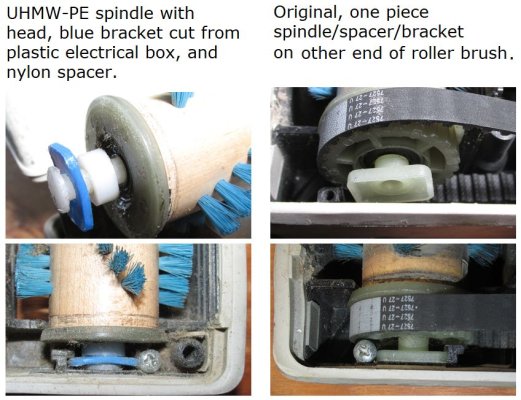NW-Bound
Give me a museum and I'll fill it. (Picasso) Give me a forum ...
- Joined
- Jul 3, 2008
- Messages
- 35,712
Installed a new CV half-shaft onto my RV toad yesterday.
The dinghy was dragged to Alaska and back last year, on a 10,000-mile trek. On dust roads, it picked up all the sand and mud kicked up by the mothership, which found its way inside the CV joint because the boot was torn.
It should have been an easy job, but the lower ball joint was stuck and took 2 days to remove. ARGHHH! It's amazing how stubborn it was, considering that the parts had no rust, and when they finally came apart, the mating surfaces looked new.
After all the pounding, I left a lot of dents on the pickle fork, but it was the $20 Harborfreight ball joint separator that got the job done with a lot of pounding to assist.
When I pulled the CV shaft out, it came apart in 2 pieces. The innards of the joint were all chewed up. Yikes!
The car drives like new now. Will wait a while before contemplating replacing the other side, which was not damaged because the boot was intact.
The car suspension was amazingly tight, despite having 169K miles on the odometer. Both lower and upper ball joints showed no sign of wear, so I just replaced the boot that was smashed by the pickle fork. I already ordered ball joints on eBay which have not arrived. Not sure what to do with them now.
The dinghy was dragged to Alaska and back last year, on a 10,000-mile trek. On dust roads, it picked up all the sand and mud kicked up by the mothership, which found its way inside the CV joint because the boot was torn.
It should have been an easy job, but the lower ball joint was stuck and took 2 days to remove. ARGHHH! It's amazing how stubborn it was, considering that the parts had no rust, and when they finally came apart, the mating surfaces looked new.
After all the pounding, I left a lot of dents on the pickle fork, but it was the $20 Harborfreight ball joint separator that got the job done with a lot of pounding to assist.
When I pulled the CV shaft out, it came apart in 2 pieces. The innards of the joint were all chewed up. Yikes!
The car drives like new now. Will wait a while before contemplating replacing the other side, which was not damaged because the boot was intact.
The car suspension was amazingly tight, despite having 169K miles on the odometer. Both lower and upper ball joints showed no sign of wear, so I just replaced the boot that was smashed by the pickle fork. I already ordered ball joints on eBay which have not arrived. Not sure what to do with them now.
Last edited:



